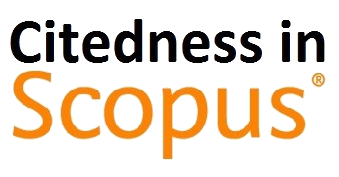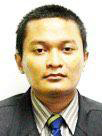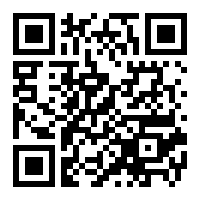User Acceptance Test For Digital Signature Application In Academic Domain To Support The Covid-19 Work From Home Program
(1) Universitas Komputer Indonesia (UNIKOM)
(2) Universitas Komputer Indonesia (UNIKOM)
(3) Universitas Komputer Indonesia (UNIKOM)
(4) Universitas Komputer Indonesia (UNIKOM)
(*) Corresponding Author
Abstract
Full Text:
PDFReferences
S. Brammer and T. Clark, “COVID-19 and Management Education: Reflections on Challenges, Opportunities, and Potential Futures,” Br. J. Manag., vol. 31, no. 3, pp. 453–456, 2020, doi: 10.1111/1467-8551.12425.
R. Radha, K. Mahalakshmi, V. S. Kumar, and A. R. Saravanakumar, “E-Learning during Lockdown of Covid-19 Pandemic: A Global Perspective,” Int. J. Control Autom., vol. 13, no. 4, pp. 1088–1099, 2020.
A. N. Bahasoan, Wulan Ayuandiani, Muhammad Mukhram, and Aswar Rahmat, “Effectiveness of Online Learning In Pandemic Covid-19,” Int. J. Sci. Technol. Manag., vol. 1, no. 2, pp. 100–106, 2020, doi: 10.46729/ijstm.v1i2.30.
U. Rahardja, S. Sudaryono, N. P. L. Santoso, A. Faturahman, and Q. Aini, “Covid-19: Digital Signature Impact on Higher Education Motivation Performance,” Int. J. Artif. Intell. Res., vol. 4, no. 1, 2020, doi: 10.29099/ijair.v4i1.171.
A. Finandhita and I. Afrianto, “Development of E-Diploma System Model with Digital Signature Authentication,” in IOP Conference Series: Materials Science and Engineering, 2018, vol. 407, no. 1, doi: 10.1088/1757-899X/407/1/012109.
I. Afrianto, A. Heryandi, A. Finadhita, and S. Atin, “Design Of E-Document System With Digital Signature Using User Centered Design Method,” in Conference SENATIK STT Adisutjipto Yogyakarta, 2019, vol. 5, pp. 345–356.
I. Afrianto, A. Heryandi, A. Finandhita, And S. Atin, “E-Document Autentification With Digital Signature Model For Smart City In Indonesia.” Journal of Engineering Science and Technology,15, 2020, pp. 28-35
I. Afrianto, A. Heryandi, A. Finandhita, and S. Atin, “Prototype of E-Document Application Based on Digital Signatures to Support Digital Document Authentication,” IOP Conf. Ser. Mater. Sci. Eng., vol. 879, no. 1, 2020, doi: 10.1088/1757-899X/879/1/012042.
Y. Maruli and Y. Kerlooza, “The Designing of User Acceptance Measurement Tool for Web-Based Application Interface Using Combination from Nielsen’s Method and Questionnaire Technique,” in IOP Conference Series: Materials Science and Engineering, 2020, vol. 879, no. 1, p. 12081.
Z. A. K. Hamza and M. Hammad, “Testing approaches for Web and mobile applications: An overview,” Int. J. Comput. Digit. Syst., vol. 90, no. 4, pp. 657–664, 2020, doi: 10.12785/ijcds/090413.
S. Basak and M. S. Hosain, “Software Testing Process Model from Requirement Analysis to Maintenance,” Int. J. Comput. Appl., vol. 107, no. 11, 2014.
C. K. N. C. K. Mohd and F. Shahbodin, “Personalized learning environment: alpha testing, beta testing & user acceptance test,” Procedia-Social Behav. Sci., vol. 195, pp. 837–843, 2015.
Zamtinah, E. Supriyadi, and Soeharto, “Functional test of the online Recognition of Work Experience and Learning Outcome System using black box testing,” J. Phys. Conf. Ser., vol. 1446, no. 1, pp. 0–8, 2020, doi: 10.1088/1742-6596/1446/1/012060.
S. Nidhra, “Black Box and White Box Testing Techniques - A Literature Review,” Int. J. Embed. Syst. Appl., vol. 2, no. 2, pp. 29–50, 2012, doi: 10.5121/ijesa.2012.2204.
S. A. Deshpande, N. A. Deshpande, V. M. Marathe, and G. V Garje, “Improving software quality with agile testing,” Int. J. Comput. Appl., vol. 1, no. 22, pp. 68–73, 2010.
S. Sutiah and S. Supriyono, “Software Testing on The Learning of Islamic Education Media Based on Information Communication Technology Using Blackbox Testing,” IJISTECH (International Journal of Information System & Technology), 3(2), 254-260, 2020, [Online]. Available: http://ijistech.org/ijistech/index.php/ijistech/article/view/57.
P. O. Thatawong and A. Jiamsanguanwong, “User requirement and usability testing framework for information system development: case study of financial institution,” in IOP Conference Series: Materials Science and Engineering, 2020, vol. 784, no. 1, p. 12032.
D. Hariyanto and T. Köhler, “A Web-Based Adaptive E-learning Application for Engineering Students: An Expert-Based Evaluation.,” Int. J. Eng. Pedagog., vol. 10, no. 2, pp. 60–71, 2020.
J. W. Jeong, N. H. Kim, and H. P. In, “GUI information-based interaction logging and visualization for asynchronous usability testing,” Expert Syst. Appl., vol. 151, p. 113289, 2020, doi: 10.1016/j.eswa.2020.113289.
S. Mellikeche, H. de Fatima Marin, S. E. Benítez, A. C. O. de Lira, F. G. B. de Quirós, and P. Degoulet, “External validation of the unified model of information systems continuance (UMISC): An international comparison,” Int. J. Med. Inform., vol. 134, 2020, doi: 10.1016/j.ijmedinf.2019.07.006.
N. W. Masri, J. J. You, A. Ruangkanjanases, S. C. Chen, and C. I. Pan, “Assessing the effects of information system quality and relationship quality on continuance intention in e-tourism,” Int. J. Environ. Res. Public Health, vol. 17, no. 1, 2020, doi: 10.3390/ijerph17010174.
T. Fujii, T. Dohi, H. Okamura, and T. Fujiwara, “A software accelerated life testing model,” in 2010 IEEE 16th Pacific Rim International Symposium on Dependable Computing, 2010, pp. 85–92.
T. M. Branch, “User Acceptance Testing (UAT) Process,” Inf. Technol. Manag. Branch, vol. Ed. Britis, pp. 111–112, 2008.
H. C. Zhang, “Research on New Techniques and Development Trend of Software Testing,” in Advanced Materials Research, 2013, vol. 760, pp. 1298–1301.
S. Zaineldeen, L. Hongbo, and B. M. A. Hassan, “Technology Acceptance Model’Concepts, Contribution, Limitation, And Adoption In Education,” Univers. J. Educ. Res., vol. 8, no. 11, pp. 5061–5071, 2020.
DOI: https://doi.org/10.30645/ijistech.v5i3.132
Refbacks
- There are currently no refbacks.
Jumlah Kunjungan:
Published Papers Indexed/Abstracted By:













